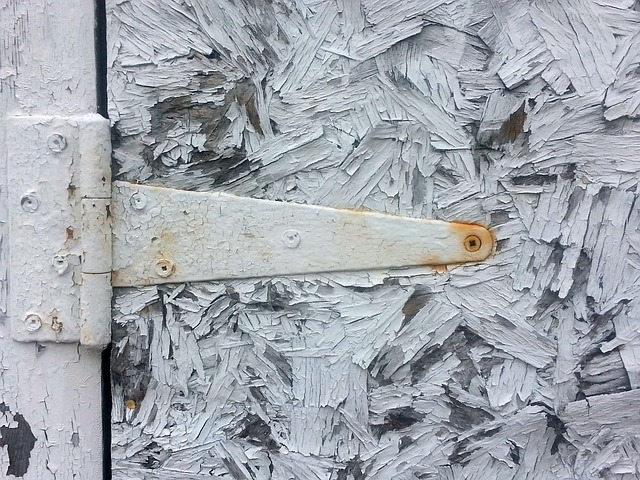Garage door issues are common home repairs, caused by wear & tear or weather changes. Regular maintenance, including lubrication, part replacement, and battery changes, prevents problems. With proper tools (socket set, wrenches, screwdrivers) and safety precautions (unplug power, wear protective gear), homeowners can tackle basic fixes like tightening screws, clearing debris, lubricating tracks, and replacing worn parts. Regular checks for wear, balanced doors, and insulation maintenance extend the life of your garage door as part of comprehensive Home Repair and Maintenance.
“Looking to tackle that nagging garage door problem? This comprehensive guide is your home repair and maintenance solution. We demystify garage door repairs, breaking down common issues from squeaky tracks to off-track doors. Learn essential safety precautions and gather the right tools for the job. Our step-by-step guide ensures you’re prepared to fix minor problems yourself. Plus, discover expert tips for regular maintenance, guaranteeing a smooth, safe, and reliable garage door system.”
- Understanding Common Garage Door Issues
- Tools and Safety Precautions for Repair
- Step-by-Step Guide to Fixing Your Garage Door
- Maintenance Tips for Longevity
Understanding Common Garage Door Issues
Garage door problems are common home repair issues that many homeowners face. By understanding the typical issues, you can better prepare for maintenance and repairs, ensuring a functional and safe garage. One of the most frequent problems is the door not opening or closing correctly, often due to misaligned tracks or a broken spring. This can be caused by various factors, such as weather changes affecting the metal components or frequent use leading to wear and tear.
Another common issue is a noisy garage door, which may indicate loose or worn-out parts. The squeaking or grinding sounds could signal the need for lubrication or replacement parts. Additionally, remote controls failing to operate the door can be attributed to low batteries or a faulty transmitter, requiring simple replacements for an immediate fix. Regular maintenance and addressing these common issues are essential aspects of home repair and maintenance, ensuring your garage door functions optimally and securely.
Tools and Safety Precautions for Repair
Before tackling any garage door repair, it’s crucial to assemble the right tools for the job. Basic tools like a socket set, wrenches, screwdrivers, pliers, and a measuring tape are essential for most repairs. Having a variety of sizes ensures you can match them to the specific bolts, screws, or hinges on your door. Additionally, consider investing in a garage door opener repair kit, which often includes common replacement parts like springs, cables, and rollers.
Safety is paramount when conducting any home repair and maintenance, especially with garage doors due to their weight and mechanical power. Always unplug the garage door opener or turn off the power at the main circuit breaker before beginning work. Wear safety goggles to protect your eyes from debris, and consider using thick gloves to shield your hands. Make sure the area is well-lit for clear visibility, and keep children and pets away from the workspace to avoid accidents.
Step-by-Step Guide to Fixing Your Garage Door
Fixing your garage door is a common home repair and maintenance task that many homeowners can handle with some basic tools and know-how. Before beginning, ensure you have all necessary tools at hand, including a flashlight, socket set, and a new garage door spring (if needed). Safety should be your top priority; always unplug the door opener or turn off power to the unit before starting any repairs.
Start by inspecting the door for any visible damage or wear. Tighten loose screws or hinges, replacing worn-out parts if necessary. The next step is to check and lubricate the tracks. Clear any debris and apply a light coat of grease or lubricant to ensure smooth operation. One of the most common issues is a broken spring, which can be replaced by following instructions specific to your door model. If you’re unsure, consult a professional for assistance.
Maintenance Tips for Longevity
Regular maintenance is key to ensuring your garage door functions optimally and lasts for years to come. Here are some simple tips to keep in mind as part of your home repair and maintenance routine. First, check all components for wear and tear, replacing any frayed or damaged cables, hinges, or springs promptly. Lubrication is another essential step; regularly apply a silicone-based lubricant to moving parts to prevent rust and ensure smooth operation. Testing the door’s balance and alignment is also crucial; regular adjustments can keep the door from sagging or rubbing against the floor. Lastly, don’t forget to inspect the door’s insulation and weatherstripping to maintain energy efficiency.
Repairing your home garage door is a manageable task that can save you time and money. By understanding common issues, taking necessary safety precautions, and following a step-by-step guide, you can effectively address and fix many problems. Regular maintenance is key to ensuring longevity and performance of your garage door system. Embrace DIY home repair and maintenance by equipping yourself with the right tools and knowledge—your garage (and wallet) will thank you.
